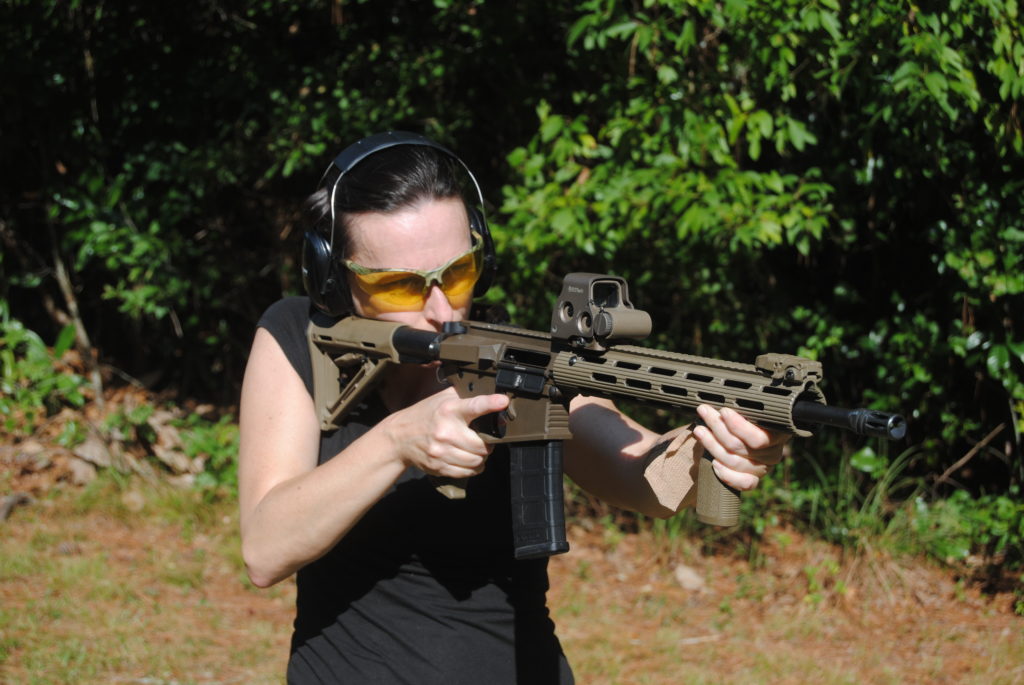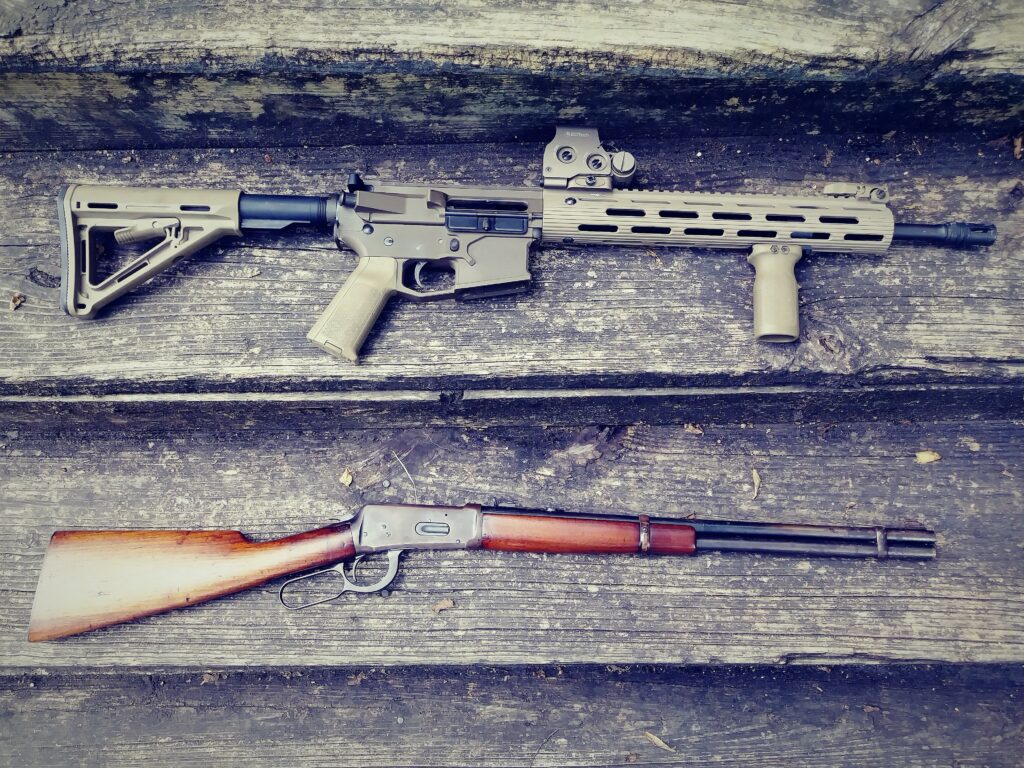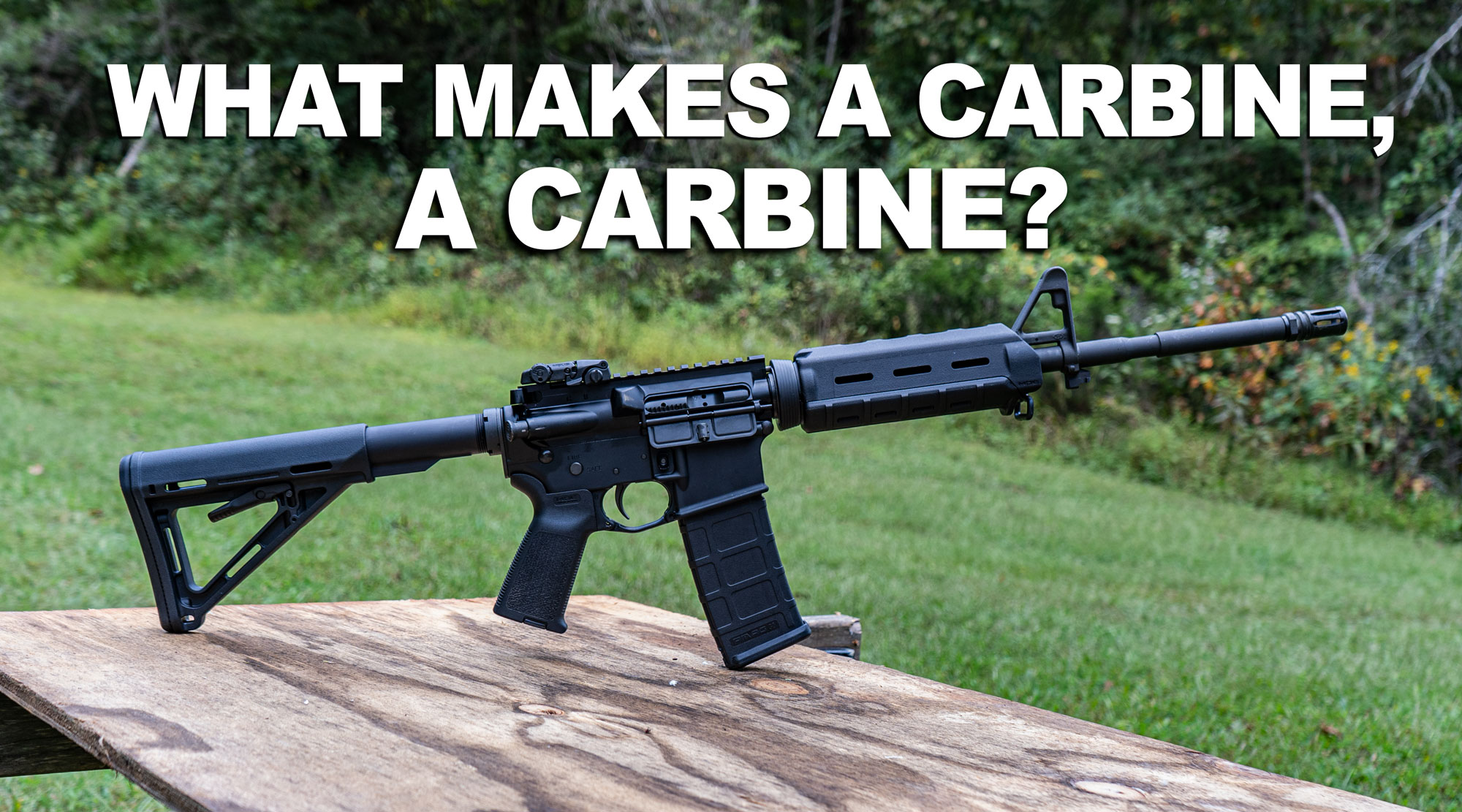What makes a carbine, a carbine? Also, is it different from a rifle? How so? In this article, let’s go deep on carbines.
The world of firearms really has its own language. For those new to shooting, that vocabulary can be pretty confusing, especially since the language is somewhat imprecise. Although the exact definitions of many terms are pretty foggy, words are also often misused. (Hello, media pundits who like to incorrectly use the terms “clip” and “assault rifle.” I’m talking to you!)
One common and often misunderstood term is “carbine.”
What Is A Carbine?

The short answer is: a carbine is a compact, short-barreled rifle.
But like most things in the world of firearms, the designation can be slightly more complicated.
The general consensus is a modern carbine is a semi-automatic rifle with a barrel under 20 inches long that carries up to 30 rounds in a magazine. Modern carbines usually fire an intermediate cartridge (like .223 Remington or 5.56 NATO) instead of a full-power cartridge like the .308 Winchester or .30-06 Springfield.
Of course, these days we get into pistol caliber carbines. Firearms that look like rifles but are chambered for pistol calibers – like the AR-9. They can really muddy the water and make constructing a definition of “carbine” confusing.
Difference Between Carbine and Rifle
Many carbines are simply shortened versions of longer rifles. The lighter weight and compact size of these carbines makes them more maneuverable and usually easier to handle, especially in tight quarters.
The smaller carbines usually fire the same ammunition as their longer barreled big brothers. However, the shorter barrel reduces the muzzle velocity. This can be an issue for carbines that fire lightweight projectiles (like 5.56 NATO), since these rounds are most effective when they travel at high velocities. When fired from a carbine with a significantly shortened barrel, these rounds lose power, penetration, and range, which makes them far less practical for hunting and personal defense.
The History of the Carbine
For many people, especially those outside of modern gun culture, the word “carbine” conjures images of modern war rifles. However, the word “carbine” is anything but modern.

Thus, the first carbine was born. About the length of a sheathed sword, mounted soldiers carried the original carbines attached to their saddles and arranged to hang clear of the horse’s legs.
Early Carbines
These early carbines were less accurate and less powerful than the longer muskets carried by infantrymen. Later, the invention of rifled barrels and fast-burning smokeless powder would increase the accuracy and velocity of these compact weapons.
Carbines would become the perfect choice for cowboys and frontiersmen, who often carried both a carbine and revolver that both used the same ammunition.
Today, the United States military uses the M4 carbine. Like the earliest carbines these short-barreled rifles are more convenient for transportation. However, modern warriors don’t ride horses. Instead, they ride in trucks, armored personnel carriers, helicopters and other aircraft. Modern compact carbines are also much more suited to the close quarters combat typical of current urban military engagement.
Civilian Carbines

Many common citizens use carbines for hunting everything from varmints to big game. The shorter barrel and light weight makes them easier to maneuver in thick woods. Their compact design also makes them a better fit for younger hunters, or hunters who are naturally short (making them a natural favorite for female hunters).
The carbine’s lightweight maneuverability and mild recoil make them perfect for introducing new shooters to the sport. These same qualities also make them a favorite for target shooting and recreational plinking.
Many civilians are also turning to carbines for home defense. They are easier to aim in cramped indoor areas than bulky shotguns or long-barreled rifles. The compact carbine gives homeowners, especially novice shooters, an advantage when shooting inside their homes. It can actually be easier for inexperienced shooters to hit a target with a carbine than a handgun, and carbines lack the recoil and excessive blast produced by home defense shotguns.
Final Thoughts
Although there is no hard criteria for defining a carbine, they are basically short-barreled rifles. This means that all carbines are rifles, but not all rifles are carbines.
The shorter barrel of the carbine may decrease accuracy and effective range, but there are still plenty of practical applications for the modern carbine. These applications include hunting, home defense, and introducing newbies to shooting. Plus, they are just plain fun to shoot, which certainly counts for something.
